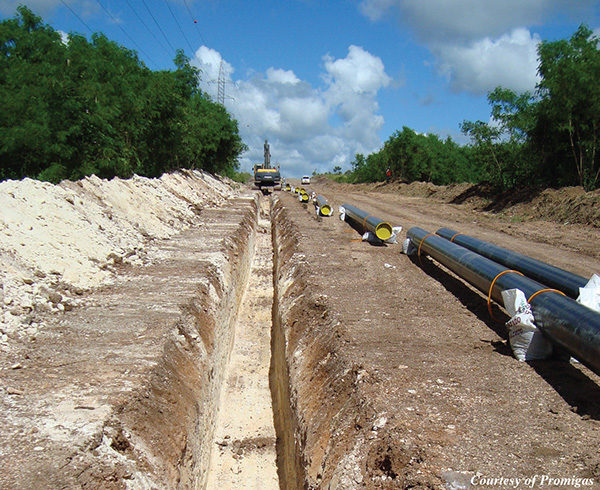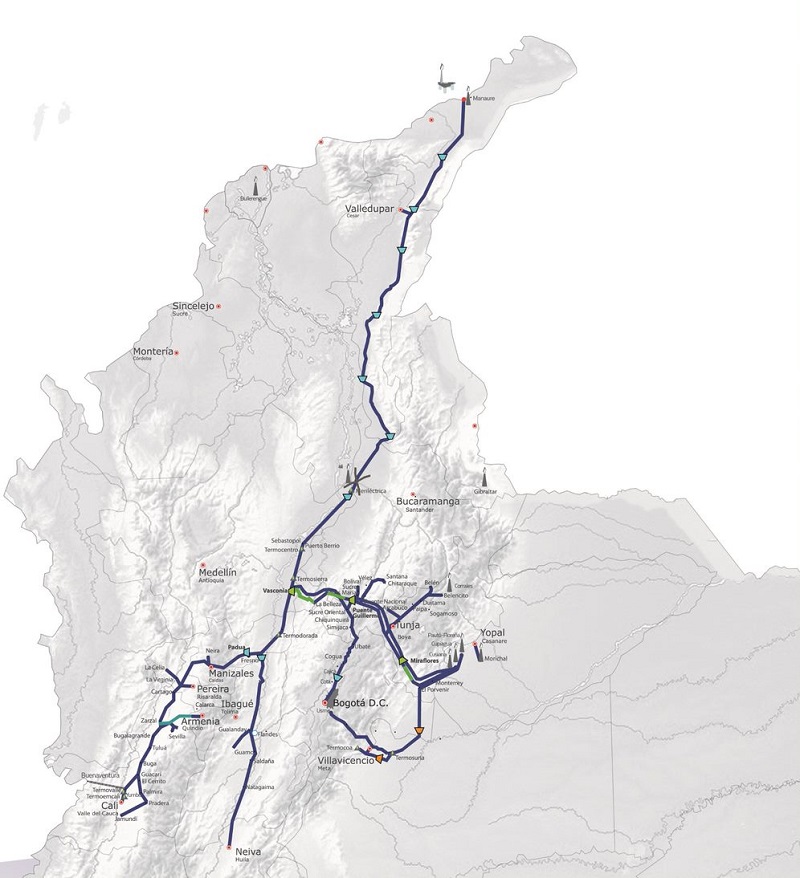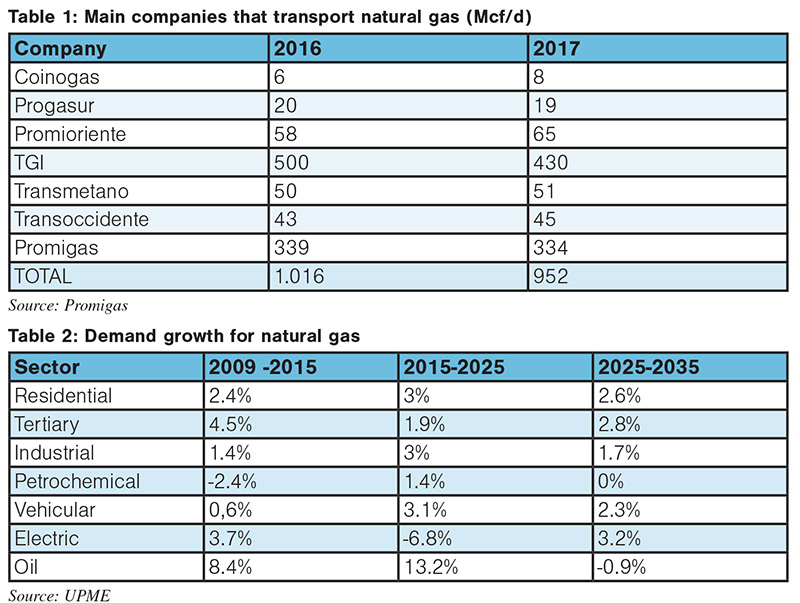January 2019, Vol. 246, No. 1
Features
Colombia Invests in New Gas Pipeline Network
By Mauro Nogarin, Contributing Editor
According to the Colombian government’s planning unit (UPME) in the period 2016-2031, the growth of the natural gas market is expected to reach 2%, largely due to increased industrial, thermoelectric and residential sectors.
By 2030, more than 600,000 new users will be in rural areas, according to UPME. Additionally, research carried out by Canacol Energy, showed the demand for natural gas in Colombia continues to increase with current consumption reaching 1,000 MMcf/d.
Paradoxically, both reserves and current transport capacity are insufficient to satisfy this volume, especially in the northeastern part of the northeastern and coastal regions of the country, where the fastest growth is occurring.
In the last five years, only 173 miles (278 km) were added to the network of transport pipelines in the country, which reached 4,660 miles (7,499 km). However, it should be noted during the last five years, natural gas was brought to 171 new municipalities, and a little more than 1,880,000 new users were connected to the natural gas service at home by networks.
The volume of gas transported in the country in 2017, 952 MMcf/d, was the lowest of the last five years due to heavy rainfall that maintained an reservoirs levels, which mean lower generation of thermal plants and less gas consumption. (Table 1)
The main changes to the national demand are caused by the projects in the thermoelectric, petrochemical and vehicular sectors, located along the coast and the central portion of the country, where new industries that are projected to be built in the short- and medium-term, according to National Hydrocarbons Agency (ANH).
To resolve this difficult situation, Promigas announced the start of a series of projects to increase the supply of natural gas in the Caribbean Coast, which absorbs about 40% of the demand in the area.
The work will be carried out in the departments of Atlántico, Sucre, Córdoba and Bolívar, and include gas pipelines and compressor stations. This plan could include connecting new confirmed volumes discovered in Sucre and Córdoba. (Table 2)
To face this difficult energy situation, TGI and Promigas, the two main entities in charge of natural gas transportation in the country’s major cities, with an estimated investment of $550 million, are working on the construction of infrastructure that will expand the supply of natural gas.

The first of these projects is the expansion on the Caribbean, with the new gas pipeline, Jobo-Cartagena-Barranquilla. The objective is the construction of a parallel gas pipeline to face the decline of the Ballena gas fields in La Guajira, while taking advantage of the natural gas production from the Sucre and Córdoba fields.
This project will strengthen supply in the departments that make up the Caribbean Coast of the country, from the Nelson, Palmer, Clarinete, Bonga, Mamey and La Creciente gas fields, for a transport capacity between 350 and 460 Mcf/d.
The investment of this work is $230 million, which includes, in addition to the flow line, a new compression station and reinforcements at Philadelphia, Paiva and Caracolí.
In the central part of the country mainly from the Cusiana field, in Casanare, the company will strengthen the supply of natural gas with a project whose investment reaches $ 300 million.
The first line is Cusiana-Apiay-Ocoa, where an expansion of 64 MMcf/d involves two compression stations, one in Paratebueno and the other in Villavicencio.
The second project involves the construction of the Cusiana-Vasconia gas pipeline (Phase III), which seeks to expand transport capacity to 20 MMcf/d. By installing three compression units in Miraflores, Puente Guillermo and Vasconia, the force in the transport flow will be increased.
The third project is the expansion of the Cusiana – Vasconia gas pipeline (Phase IV), which will increase transport capacity 58 MMcf/d.
The new infrastructure consists of three gas pipelines that will be located between Cusiana and El Porvenir (Casanare), with a length of 3 miles (5 kilm); another between Puente Guillermo (Santander) and La Belleza (Boyacá), with a length of 7.2 miles (11.6 km) and finally, from Puerto Romero to Vasconia (Boyacá) of 14.2 miles (23 km).
The fourth project will run from Zarzal to La Tebaida, and aims to increase the capacity to the municipalities of Caicedonia and Seville (Valle del Cauca), as well as La Tebaida, Calarcá, Montenegro, Armenia, Quimbaya, Filandia, Circasia and Salento (Quindío). The increase will be 8.3 MMcf/d and will have a length of 22 miles (36 km).
Also, TGI announced the construction of the Buenaventura-Yumbo Pipeline, with a capacity of 450 MMcf/d and is expected to be in operation by January 2021. Upon completion of the of the Pacifico regasification plant it will have 400 MMcf/d of storage capacity and 170,000 cubic meters of LNG is completed. P&GJ







Comments